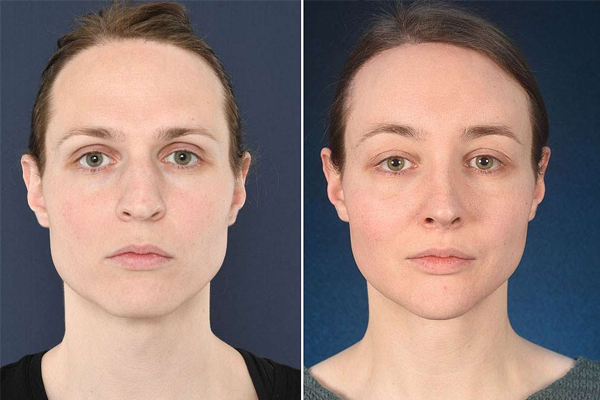Chin Reduction
Chin reduction, also known as genioplasty or chin reduction surgery, is a cosmetic procedure aimed at reducing the size or reshaping the chin to achieve a more balanced facial appearance. This can be done to correct an overly prominent or large chin that may impact facial symmetry.
Benefits of Chin Reduction
- Reduces the projection or size of a prominent chin.
- Improves facial harmony and balance.
- Enhances overall facial symmetry.
- Boosts self-confidence by correcting disproportionate facial features.
- Can be combined with other facial surgeries for a more comprehensive facial enhancement.
Procedure Overview
1. Consultation
- Discuss aesthetic goals and evaluate the ideal approach for chin reduction.
- Facial analysis to determine the amount of chin reduction needed.
2. Chin Reduction Surgery
- Anesthesia: Local anesthesia with sedation or general anesthesia.
- Incision:
- Intraoral: Inside the mouth, below the lower lip.
- Extraoral: Small incision on the skin beneath the chin.
- Reduction:
- Excess bone or tissue is trimmed or reshaped to reduce the size of the chin.
- Sometimes, bone shaving or contouring may be performed depending on the degree of reduction required.
- Closure: Stitches are used to close the incision.
3. Recovery
- Swelling, bruising, and mild discomfort for the first few days.
- Soft diet and minimal activities are recommended during the initial healing period.
- Full results are visible after 6-8 weeks as swelling subsides.
Ideal Candidates
- Individuals with a disproportionately large or prominent chin.
- Those seeking a more balanced and harmonious facial appearance.
- Healthy individuals with realistic expectations for facial contouring.
Risks and Complications
- Scarring: Minimal scarring that fades over time.
- Infection: Rare when proper post-operative care is followed.
- Numbness or Sensitivity: Temporary, which gradually resolves as healing progresses.
- Asymmetry: May require minor adjustments.
Cost Factors
- Surgeon’s expertise and location.
- Complexity of the procedure.
- Additional costs for anesthesia, post-operative care, and follow-ups.



